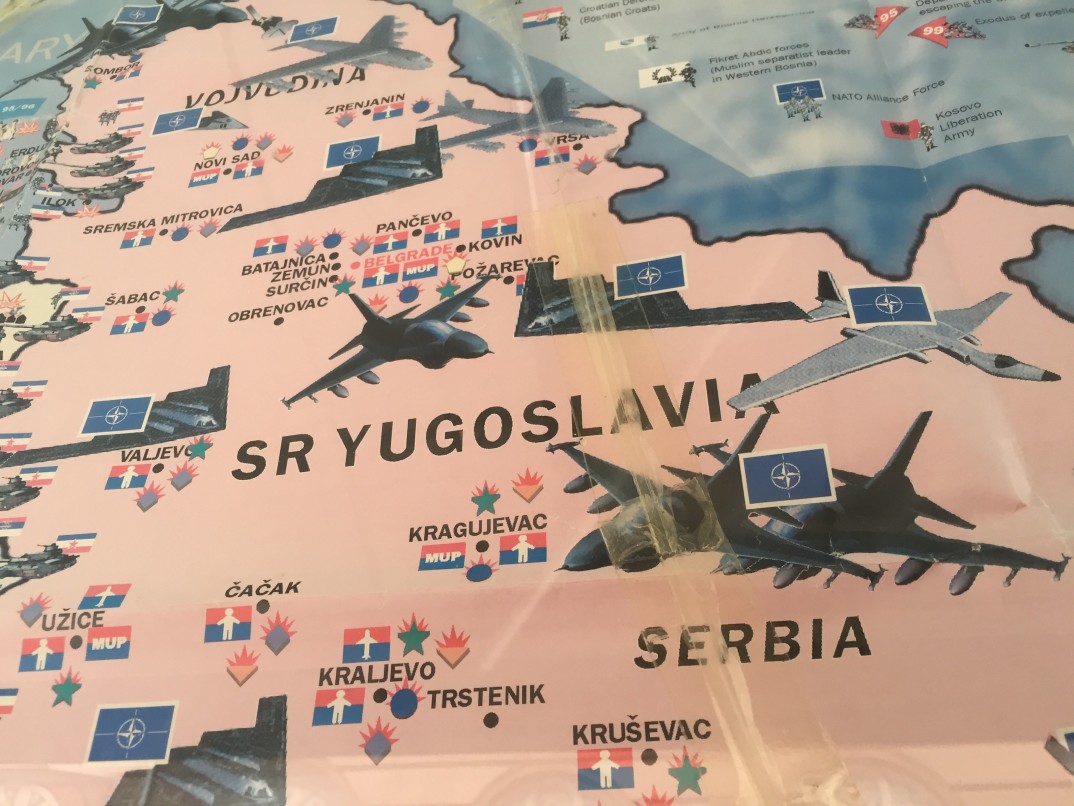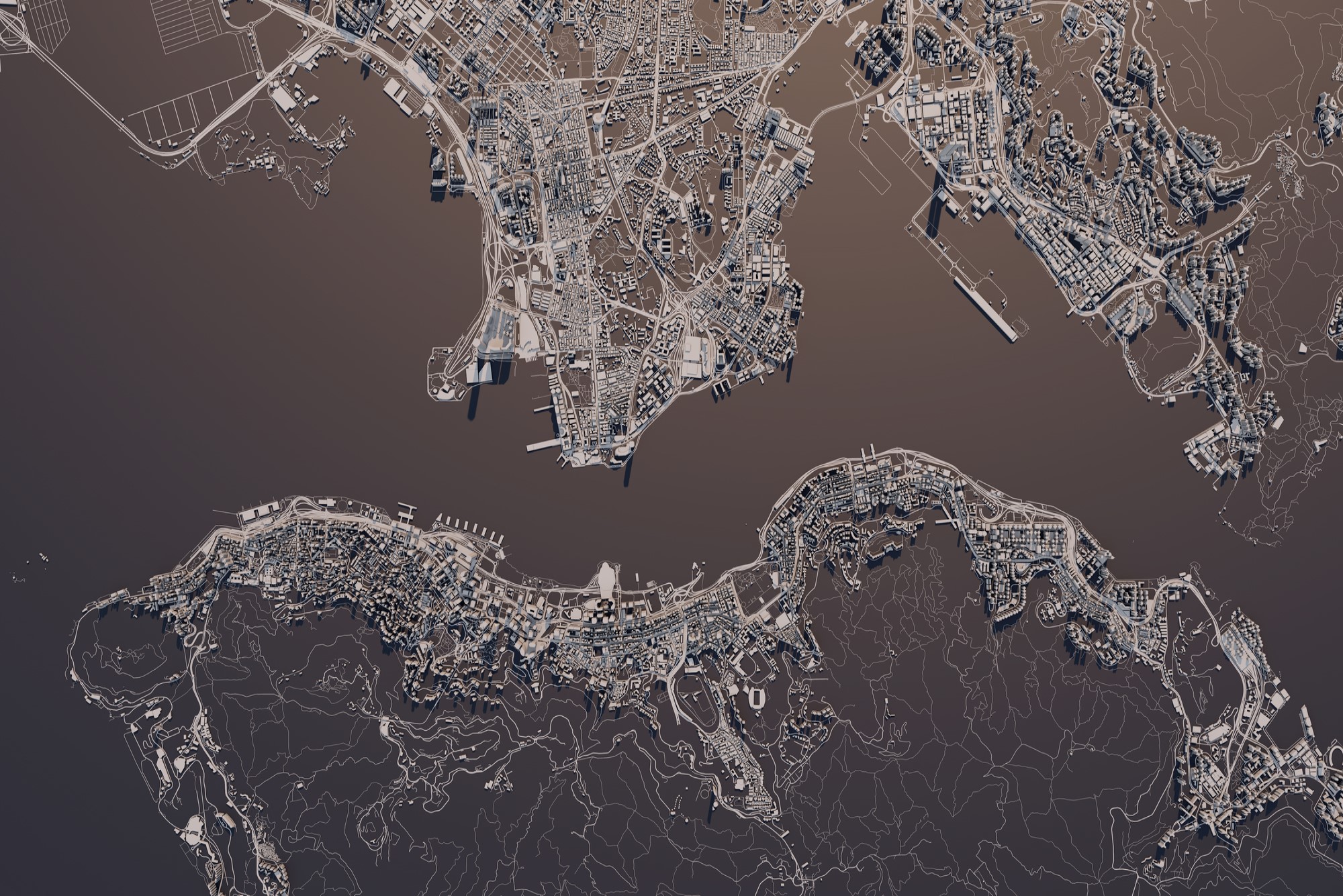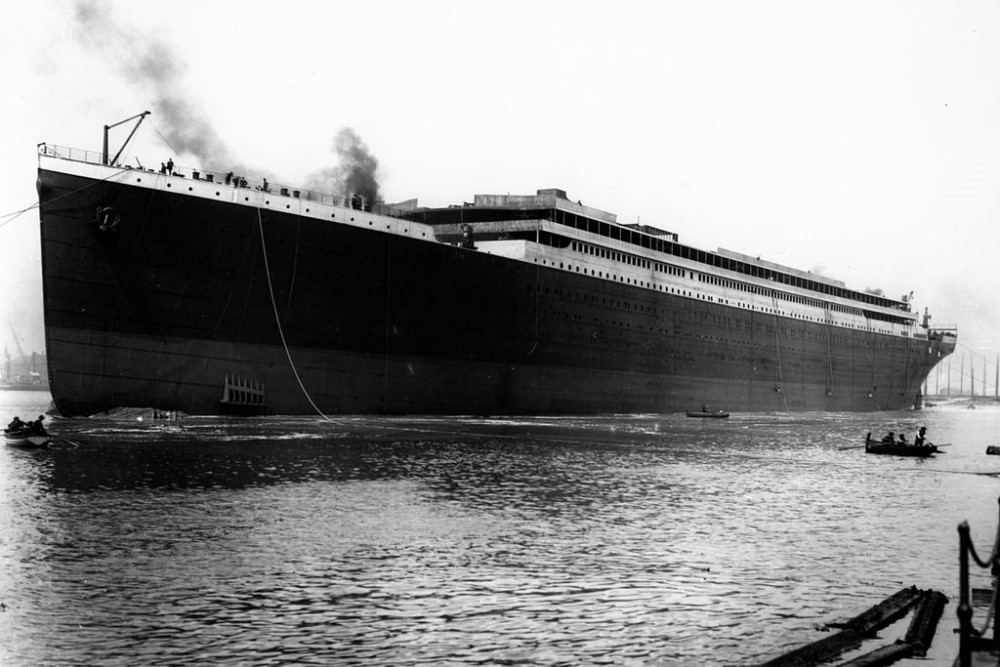In Wake of the Tomahawk

It was a chilly afternoon in Belgrade, and my group and I had already seen a lot. For the past few hours we had toured much of the city, stopping at places like the grave of Josip Broz Tito and the National Assembly building. All of the locations we had seen were politically significant in some way or another, part of a crash course on recent Serbian history. But what we were about to see was different.
Our bus left the highway and pulled into a quiet neighborhood dotted with embassies. For the most part, the buildings were beautiful, their immaculate architecture speaking to the impression each embassy wanted to leave. Yet one residence, its walls unkempt and topped with barbed wire, stood out from the rest. From behind the wall, I could just barely see the upper half of a building poking through the trees.The structure used to be Slobodan Milosevic’s mansion, we were told – an enormous white building surrounded by diplomatic residences in the upscale neighborhood of Dedinje. Now it stood empty, rubble spilling out onto the lawn from a collapsed wall facing the road.
The missiles that struck the building were Tomahawks, our guide said. Fired from NATO warships, four of them blasted through the mansion on the night of April 22, 1999, in what some said was an assassination attempt on Milosevic. No one was home at the time that they struck, but they had done their work nonetheless. The missiles were incredibly precise, she said, equipped to gut a building without destroying the outside. Rumor had it that an unexploded portion of one of the missiles was still buried somewhere in the rubble.
Tomahawk. The word stuck in my mind and wouldn’t leave. I knew that I had heard it before, mostly in news reports or history books. It felt like a familiar term, though one I could not pinpoint out of context. I certainly didn’t expect our guide to be familiar with the weapon in such detail. Yet she knew not only the model name, but also exactly what kind of carnage the weapon was designed to produce. It was not the last time the Tomahawk would be mentioned in passing. A few weeks later, I heard the word again: this time, brought up in a conversation with a Belgrade resident about life under the NATO bombing.
It felt like the legacy of the Tomahawk was inescapable. On my walk to school every day, I passed more hollow shells of its creation. The former Ministry of Defense loomed above an intersection a mile from my home, its crumbling brick silhouette slowly being overtaken by weeds. The building was destroyed on the night of April 29, and today stands in disrepair just a few blocks from the city center. Some say it was never rebuilt due to funding issues while others have argued that it remains a political symbol, a lasting reminder of the bombing’s chaos.
For those living in Belgrade at the time, the NATO bombings still constitute a vivid memory of the violent 1990s. Originally authorized to end ethnic cleansing in Kosovo, the 78-day bombing campaign made nightly air raid sirens a common occurence for the city’s residents. As the Serbian military amplified their ethnic cleansing campaign in Kosovo, NATO missiles pounded political and military infrastructure all over Serbia – claiming between 500 and 2,500 lives in the process. Sixteen years later, hollow remnants and memorials of the bombing still dot Serbia’s landscape, acting as hulking reminders of the state’s violent past.
Civilian reactions to NATO’s bombardment of Belgrade were multifaceted. As one person described to me, many Belgrade citizens did not live in constant fear of the bombings. There were nights spent in bomb shelters or basements, but the bombings also freed some people from their schools and jobs – creating a wartime vacation of sorts. But even as some residents took advantage of their newfound leisure, others began to notice trauma of the bombings simmering in the background. Some, as pointed out by Dr. Orli Fridman, faced concerns about the safety of their friends and family and experienced fear in a much more direct manner. And for some, it was only after the bombings ended that the nature of their postwar trauma could be fully realized for what it was.
Sixteen years after the bombing ended, this trauma continues to manifest itself. In some ways, it can be seen quite clearly; monuments marking Belgrade’s dead and destroyed buildings can be found throughout the city center. Yet other indications are less obvious. Such is the case with Tomahawk, a word seemingly seared into Belgrade’s collective consciousness after the bombing campaign. Those living under the bombing campaign were forced to become wartime “experts” as parts of their city burned around them – to the point where some could identify the NATO warplanes flying overhead by the sound of their engines. While not as visible as a shelled building, such markers still constitute potent reminders of the trauma that the bombing created.
Indications of it may be subtle, but this lingering trauma is all too real for many of Belgrade’s residents. Their experiences are not alone; Tomahawks and other bombs fell all over the country during NATO’s bombardment, spreading death and trauma in their wake. Regardless of whether such bombings were justified, it cannot be denied that this painful legacy lives on today.
Evaluating the extent of this legacy, though, has proven particularly problematic. The notion of victimhood after the 1990s has been particularly complicated, no more so than in Serbia. As Fridman points out, some Serbs have enforced a cognitive dissonance between the bombings and the ethnic cleansing in Kosovo, claiming that the NATO bombing was only another example of Serbs being unfairly victimized. Others have argued that NATO’s actions brought about “reverse ethnic cleansing” in Kosovo, as Kosovar Serbs were largely driven from the state by the ethnic Albanian population. Such narratives parallel those surrounding Serbia’s actions in Bosnia, where some claim that Serbs were the true victims, even in light of events like the genocide of 8,000 Bosniak Muslims at Srebrenica.
These narratives of competitive victimhood require a critical look at the difference between fact and fiction, as well as between victim and aggressor. Yet this does not mean that the trauma faced by Serbs can be ignored. It is true that many consider Serbia to be the primary aggressor in the wars of the 1990s, just as it is true that Serbian forces inflicted trauma untold upon their many victims. But this does not preclude the fact that Serbia’s citizens faced trauma as well, both during the NATO bombings and in other events of the 1990s.
It is this trauma that must be considered when approaching the legacy in the 1990s. Such trauma can be seen in burning buildings and families torn apart by war. But it can also be seen in the reoccurrence of a single word, revealing the tragic impact of an event in its eerie specificity. And while this painful legacy may not be given political equivalence in the larger picture of the 1990s, to ignore its human cost altogether would hardly be appropriate.




